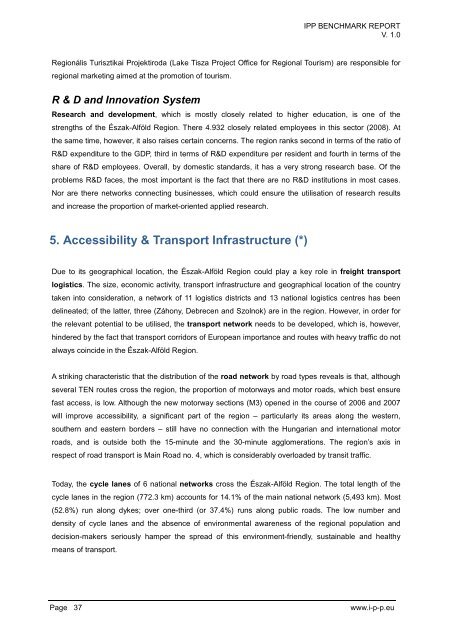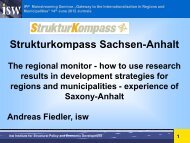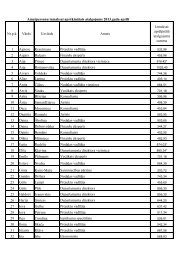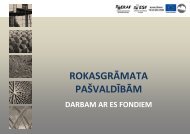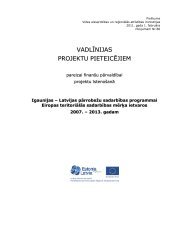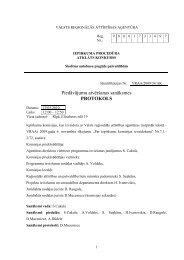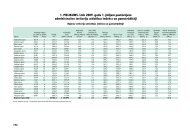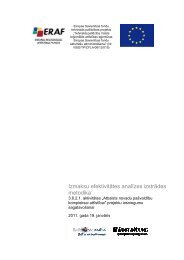Benchmark Study 1
Benchmark Study 1
Benchmark Study 1
You also want an ePaper? Increase the reach of your titles
YUMPU automatically turns print PDFs into web optimized ePapers that Google loves.
IPP BENCHMARK REPORT<br />
V. 1.0<br />
Regionális Turisztikai Projektiroda (Lake Tisza Project Office for Regional Tourism) are responsible for<br />
regional marketing aimed at the promotion of tourism.<br />
R & D and Innovation System<br />
Research and development, which is mostly closely related to higher education, is one of the<br />
strengths of the Észak-Alföld Region. There 4.932 closely related employees in this sector (2008). At<br />
the same time, however, it also raises certain concerns. The region ranks second in terms of the ratio of<br />
R&D expenditure to the GDP, third in terms of R&D expenditure per resident and fourth in terms of the<br />
share of R&D employees. Overall, by domestic standards, it has a very strong research base. Of the<br />
problems R&D faces, the most important is the fact that there are no R&D institutions in most cases.<br />
Nor are there networks connecting businesses, which could ensure the utilisation of research results<br />
and increase the proportion of market-oriented applied research.<br />
5. Accessibility & Transport Infrastructure (*)<br />
Due to its geographical location, the Észak-Alföld Region could play a key role in freight transport<br />
logistics. The size, economic activity, transport infrastructure and geographical location of the country<br />
taken into consideration, a network of 11 logistics districts and 13 national logistics centres has been<br />
delineated; of the latter, three (Záhony, Debrecen and Szolnok) are in the region. However, in order for<br />
the relevant potential to be utilised, the transport network needs to be developed, which is, however,<br />
hindered by the fact that transport corridors of European importance and routes with heavy traffic do not<br />
always coincide in the Észak-Alföld Region.<br />
A striking characteristic that the distribution of the road network by road types reveals is that, although<br />
several TEN routes cross the region, the proportion of motorways and motor roads, which best ensure<br />
fast access, is low. Although the new motorway sections (M3) opened in the course of 2006 and 2007<br />
will improve accessibility, a significant part of the region – particularly its areas along the western,<br />
southern and eastern borders – still have no connection with the Hungarian and international motor<br />
roads, and is outside both the 15-minute and the 30-minute agglomerations. The region’s axis in<br />
respect of road transport is Main Road no. 4, which is considerably overloaded by transit traffic.<br />
Today, the cycle lanes of 6 national networks cross the Észak-Alföld Region. The total length of the<br />
cycle lanes in the region (772.3 km) accounts for 14.1% of the main national network (5,493 km). Most<br />
(52.8%) run along dykes; over one-third (or 37.4%) runs along public roads. The low number and<br />
density of cycle lanes and the absence of environmental awareness of the regional population and<br />
decision-makers seriously hamper the spread of this environment-friendly, sustainable and healthy<br />
means of transport.<br />
Page 37<br />
www.i-p-p.eu


